Seattle tugboats
There is a long marine tradition of Seattle tugboats. The complex inlets of Puget Sound needed tugs to move sailing vessels against contrary winds. Tugs would wait in the open Pacific off Cape Flattery to greet the sailing ships entering the sound to move lumber. During the war years and the Alaskan booms, it became of renewed importance.
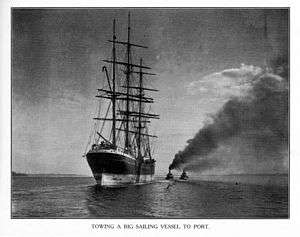
History
The history of Seattle tugboats goes back, with steamships, to the Beaver in 1836, and the Goliah in 1849. Seattle was (and still is) an important trading center with commerce to ports at Oregon, British Columbia, and Alaska. The early lumbering and logging industry needed tugs to move log booms from the hillsides to the sawmills.
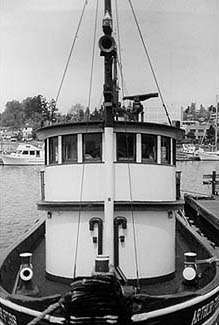
Thea Foss established Foss tug in Tacoma in 1889. Foss tugboats have the longest and most expansive history in the area. Many of the small logging firms had tugboats for mills at Port Gamble, Bellingham, Everett, Port Ludlow and Olympia.
The Klondike Gold Rush spurred the need for seagoing vessels. Every floating vessel was put to use and more were built. With this rush came this explosion of Alaskan canneries and copper mines. Sea trade became important, as it is to this day, to a distant, disconnected northern state. At the same time the U.S. Navy established a naval base at Bremerton, and more tugs were needed. Shipyards were established in Seattle and built battleships. Industry set up at tidewater (viz Boeing) on the Duwamish River estuary. Marine building expanded at Anacortes.
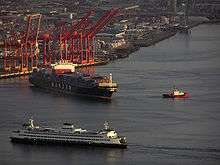
West coast tugs were built of coastal Douglas Fir, with cedar upper decks. Condensing triple-expansion steam engines and coal-fired boilers were common (sometimes sawmill slabwood was burnt.) Hundreds of tugs worked the coastal waters of Washington state. The entry of the United States into the First World War expanded the need for shipping. Aircraft spruce production expanded on the remote Olympic Peninsula, and Alaska. The United States Shipping Board built Ferris ships. A barge lightering 620 tons of ammunition for Russia was sabotaged, set alight, and exploded in Elliott Bay in 1915. Many windows from homes and businesses were blown out from the blast.[1]
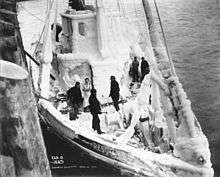
Inter-war years
The large sawmill at Shelton needed to move lumber and logs, while the gravel pit at Steilacom moved barges of aggregate. The isolated railroads of Port Townsend, Victoria, Squamish, Skagway, Cordova, and Alaska required barge traffic to connect with the Lower 48 states. Ship berthing, log towing, oiling and fishing remained the core enterprises.
_circa_1925.jpeg)
Second World War
During the Second World War, tugs were seconded to the US Navy to fight in the Pacific. Tugs were needed to help the Navy in the South Pacific; in the North Pacific with the Aleutian Campaign; in Alaska with the Alaska Highway. Tugs were needed in the logging industry, a vital war commodity. Tugs were needed to build bases, move ships, build ships around the Sound as the State geared up for war. More tugs were built in the emergency program (over 850 tugs were built nationwide for the navy) and these became available for civilian use after the war.
Post war work
After the Second World War, the steam fleet was retired and replaced with war built tugs from the navy, and from the army (Army Transport Service). No steam tugs survive in Puget Sound (even with the addition of the Magic and Moonlight). New welded steel tugs came online, complete with high speed diesel engines. Pulp mills were built, as were highways and bridges which all needed cement and stone revetment. The Korean and Vietnam Wars put demands on Pacific shipping, including tugs.
There was the ongoing sea-lift to Alaska, with the food, fuel, industrial parts, machinery, and construction supplies needed to be embarked and hauled to the northern state. The Alaska North Slope oil boom at Prudhoe Bay Oil Field, Tongass Logging, and the Cold War brought more barge traffic.
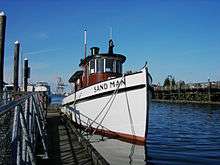
See also
- Goliah (steam tug 1849)
- Lake Union
- Aleutian Islands
- Alaskan Panhandle
- Audrey (tugboat)
- Arthur Foss
- Port of Seattle
- Port of Tacoma
- Steam tugs of Washington